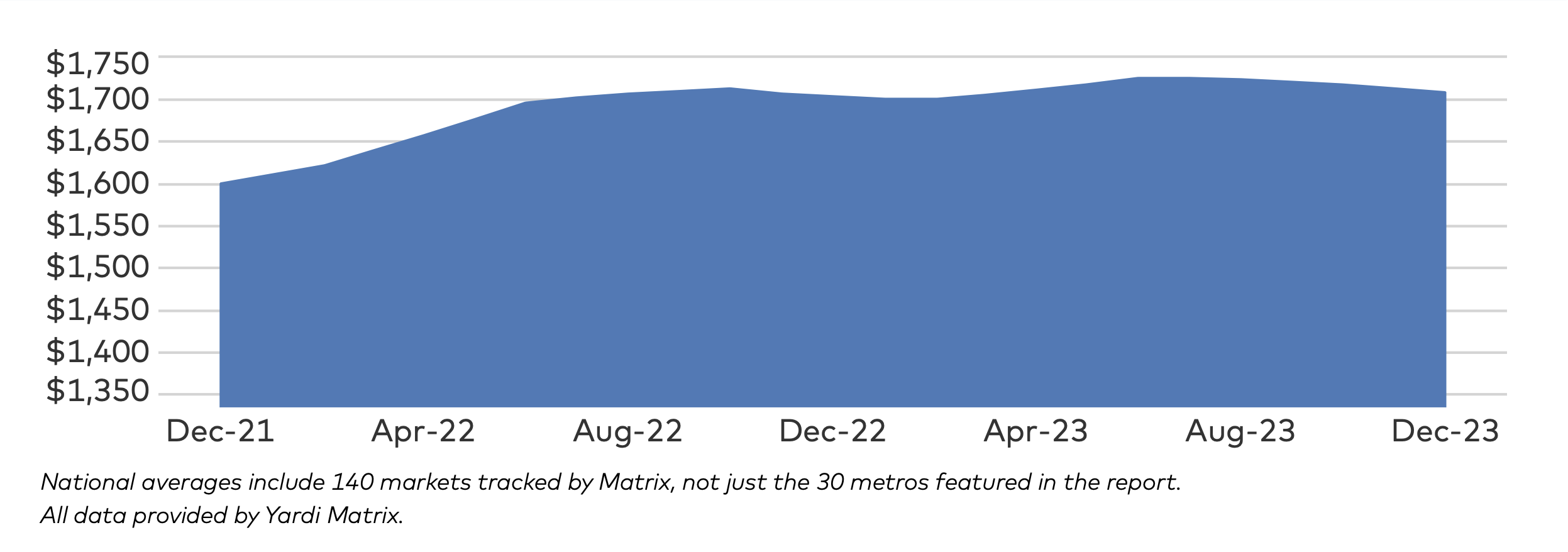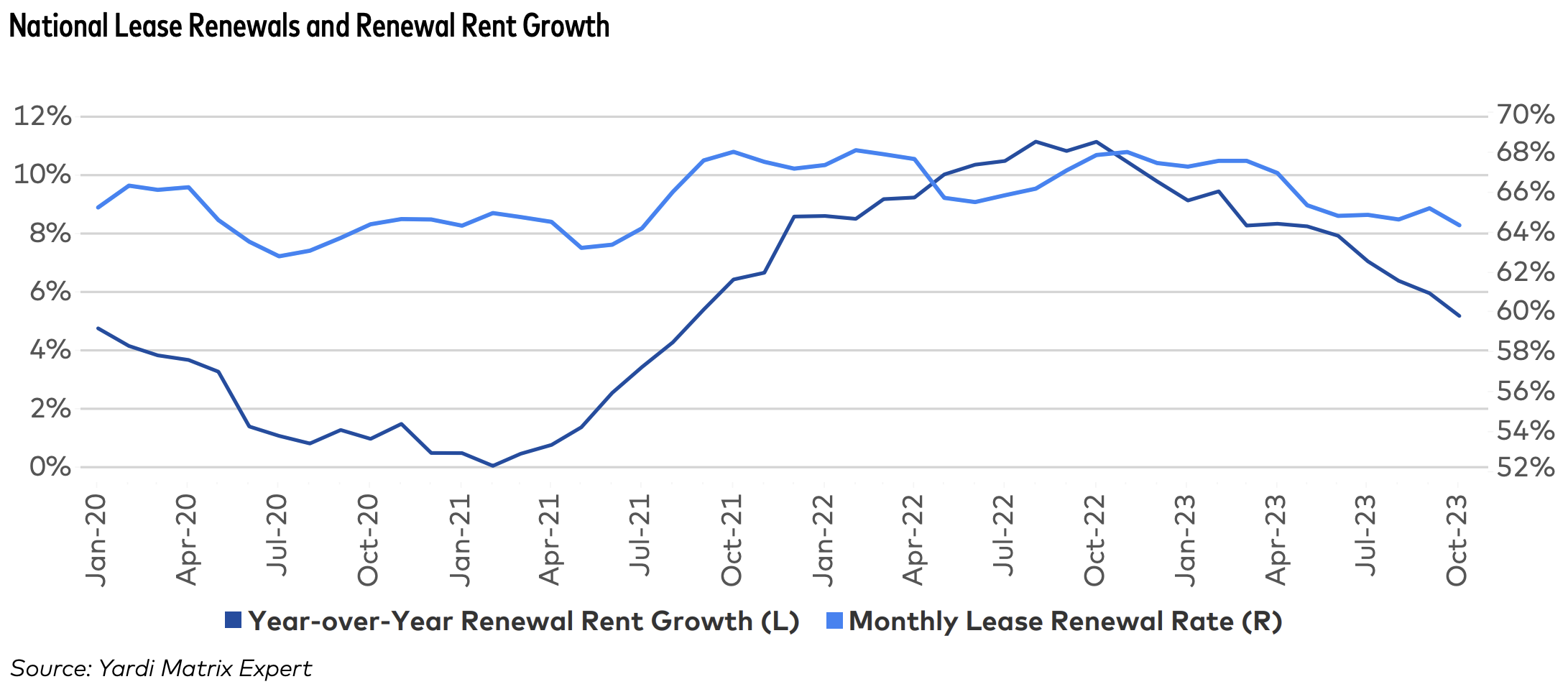The December 2023 National Multifamily Report by Yardi Matrix highlights the highs and lows of the multifamily market in 2023. Despite strong demand, the year-over-year (YOY) growth for rent remained largely unchanged at 0.3 percent—a stark contrast to December 2022's 6.4% YOY increase.
According to Yardi Matrix, 2023's full-year rent growth of 0.3% is the weakest rent performance since the 0.2% increase in 2010 (barring the 2020 pandemic year's 0.1% gain). Negative rent growth is affecting several major metropolitan areas as well, with Austin, Texas, ending the year at a -5.7% growth rate. Other metros such as Orlando, Fla.; Portland, Ore.; Phoenix, Ariz.; and Atlanta, Ga.; all are down by at least 3% year-over-year.

Strong job market
Despite the multifamily market ending 2023 on a downswing, conditions may not be as weak as they appear. A strong job market continues to drive demand and shows signs of holding up following the Federal Reserve's rate hikes.
Also aiding in demand is net immigration, which has increased by more than one million annually, according to the report.
Occupancy rates
The national occupancy rate left December 2023 at 94.8 percent, unchanged from the previous month. Rates were either unchanged or down YOY in all but five markets: Chicago, Ill. (+0.2% YOY), Seattle, Wash. (+0.2% YOY), Denver, Colo. (+0.1% YOY), Washington, D.C. (+0.1% YOY), and the Twin Cities (+0.1% YOY).
Atlanta had the largest decline of the year, down 1.3 percent.

Overall outlook for multifamily housing in 2024
- Expenses, income, deliveries, and interest rates pose key challenges for the multifamily industry this year
- Though the market is expected to deliver over 500,000 units this year, there is a dramatic decrease in starts
- Recent interest rate declines alleviate potential distress for multifamily owners, but long-term stability remains uncertain
Related Stories
| Aug 11, 2010
CityCenter Takes Experience Design To New Heights
It's early June, in Las Vegas, which means it's very hot, and I am coming to the end of a hardhat tour of the $9.2 billion CityCenter development, a tour that began in the air-conditioned comfort of the project's immense sales center just off the famed Las Vegas Strip and ended on a rooftop overlooking the largest privately funded development in the U.
| Aug 11, 2010
Giants 300 Multifamily Report
Multifamily housing starts dropped to 100,000 in April—the lowest level in several decades—due to still-worsening conditions in the apartment market. Nonetheless, the April total is below trend, so starts will move progressively back to a still-depressed 150,000-unit pace by late next year.
| Aug 11, 2010
The softer side of Sears
Built in 1928 as a shining Art Deco beacon for the upper Midwest, the Sears building in Minneapolis—with its 16-story central tower, department store, catalog center, and warehouse—served customers throughout the Twin Cities area for more than 65 years. But as nearby neighborhoods deteriorated and the catalog operation was shut down, by 1994 the once-grand structure was reduced to ...
| Aug 11, 2010
Gold Award: Westin Book Cadillac Hotel & Condominiums Detroit, Mich.
“From eyesore to icon.” That's how Reconstruction Awards judge K. Nam Shiu so concisely described the restoration effort that turned the decimated Book Cadillac Hotel into a modern hotel and condo development. The tallest hotel in the world when it opened in 1924, the 32-story Renaissance Revival structure was revered as a jewel in the then-bustling Motor City.








